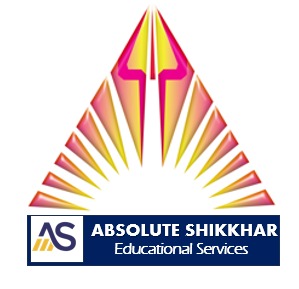
About GMAT
Focused study is necessary to grasp the material and techniques essential for success in graduate business schools to prepare for the GMAT exam. Many business schools worldwide use the Graduate Management Admission Test, or GMAT, as a standardized exam as part of their admissions procedure. Candidates must fully comprehend the Analytical Writing Assessment, Integrated Reasoning, Quantitative Reasoning, and Verbal Reasoning components to perform well on the GMAT. A competitive score also depends on creating efficient test-taking techniques and preparing with authentic GMAT materials. Through commitment and thoughtful planning, applicants can increase their chances of being accepted into prestigious business schools.
The GMAT Exam-Focus Edition lasts for 2 hours and 15 minutes, with the option of a 10-minute break. It consists of three sections, totalling 64 questions with the total score ranging from 205 to 805.
Official GMAT Website:
The GMAT Exam-Focus Edition lasts for 2 hours and 15 minutes, with the option of a 10-minute break. It consists of three sections, totalling 64 questions with the total score ranging from 205 to 805.
Visit the official website of the Graduate Management Admission Council (GMAC) for detailed information about the GMAT exam, registration, study materials, and official practice tests.
GMAT Official Website: https://www.gmac.com/
About SAT
To prepare for the SAT, one must get familiar with the test’s subject matter, hone their abilities by practising with sample questions, and develop efficient test-taking techniques. Critical reading, writing, and math skills are evaluated on the SAT. Candidates who want to do well should read a variety of materials, practice their grammar and vocabulary, and hone their mathematical skills. Frequent timed practice exams help you become accustomed to the structure and tempo. Time management, scanning sections for important information, and removing erroneous response options are all effective techniques. Additionally, using internet resources or consulting tutors can be a huge help in attaining the best possible score on the SAT.
Structure of the SAT:
1. Evidence-Based Reading and Writing (EBRW):
Reading Section: This section tests comprehension and critical reading skills through passages from literature, historical documents, social sciences, and natural sciences. Students answer questions about the passages, focusing on understanding and analyzing the text.
2. Recent Changes:
The SAT has undergone several changes in recent years, including the discontinuation of the essay and Subject Tests. In addition, the College Board has introduced digital testing options in some areas, making the exam more accessible.
The SAT remains an essential component of the college admissions process, although its significance has evolved, especially with some colleges adopting test-optional policies. However, a strong SAT score can still be a critical factor in securing admission to many institutions.
3. SAT Reading & Writing Section Best Books:
For those aiming to excel in the SAT Reading & Writing section, immersing oneself in classical novels, literature, and unabridged books is invaluable. Not only does this practice enhance reading speed, but it also fosters a deeper understanding of contextual nuances within passages.
A highly recommended resource is “The Critical Reader: The Complete Guide to SAT Reading, 3rd Edition.”
4. SAT Math Section Best Books:
Similarly, for the SAT Math section, grasping conceptual clarity through high school textbooks is indispensable.
Supplementing this with problem-solving resources such as “500 New SAT Math Problems” by Dr. Steve Warner and
“800 Math Workbook New Edition” by Dr. Jang’s SAT can significantly bolster preparation.
Supplementing this with problem-solving resources such as “500 New SAT Math Problems” by Dr. Steve Warner and
“800 Math Workbook New Edition” by Dr. Jang’s SAT can significantly bolster preparation.
About IELTS Eligibility Test
The IELTS (International English Language Testing System) is a globally recognized English language proficiency test designed to assess the language skills of non-native English speakers. It is widely used for university admissions, immigration, and employment purposes in English-speaking countries, including the UK, Canada, Australia, and the US.
Types of IELTS:
Types of IELTS:
1. IELTS Academic:**
This version is intended for individuals applying for higher education or professional registration in an English-speaking environment. It assesses whether a person is ready to study or train in English at a university or graduate level.
2. IELTS General Training:
This version is more suited for those moving to English-speaking countries for secondary education, work experience, or immigration purposes. It focuses on everyday language skills in a broader social and workplace context.
Structure of the IELTS:
1. Listening:
The listening section consists of four recorded conversations and monologues. Test-takers answer questions based on the audio, assessing their ability to understand main ideas, specific information, opinions, and attitudes.
1. IELTS Academic:**
This version is intended for individuals applying for higher education or professional registration in an English-speaking environment. It assesses whether a person is ready to study or train in English at a university or graduate level.
2. Reading:
The reading section differs slightly between the Academic and General Training versions. In the Academic version, the texts are more formal and focused on academic subjects, while the General Training version includes more general content. This section assesses reading comprehension, including understanding the main ideas, details, and implied meanings.
3. Writing:
The writing section also varies between the two versions. In the Academic test, candidates must describe visual information (such as graphs or charts) and write an essay in response to an argument or problem. The General Training test requires writing a letter and an essay. This section evaluates the ability to organize ideas, use appropriate language, and express opinions clearly.
4. Speaking:
The speaking section is a face-to-face interview with an examiner and is divided into three parts: a general introduction and interview, a short speech on a given topic, and a discussion on more abstract topics related to the speech. This section assesses fluency, pronunciation, grammar, and vocabulary.
Contact For a Free Demo Class
About TOEFL
The TOEFL (Test of English as a Foreign Language) is a standardized test designed to measure the English language proficiency of non-native speakers. Administered by the Educational Testing Service (ETS), the TOEFL is widely accepted by universities, colleges, and institutions around the world, particularly in the United States, Canada, and Australia. It is also used for immigration and employment purposes.
Structure of the TOEFL:
The TOEFL is primarily offered as the TOEFL iBT (Internet-Based Test), which is the most common version. It assesses four key language skills:
1. Reading:
The reading section involves reading passages from academic texts and answering questions that test comprehension, vocabulary, and the ability to analyze and synthesize information. The passages are typically similar to those found in university textbooks.
2. Listening:
This section includes listening to conversations, lectures, and discussions, often found in academic settings. Test-takers answer questions that assess their ability to understand main ideas, details, speaker attitudes, and connections between ideas.
3. Speaking:
The speaking section consists of six tasks: two independent tasks that require the test-taker to express opinions on familiar topics, and four integrated tasks that involve reading and/or listening to material and then speaking in response. This section measures fluency, coherence, and pronunciation.
4. Writing:
The writing section has two tasks: one integrated task where the test-taker reads a passage, listens to a related lecture, and then writes a response, and one independent task where they write an essay expressing and supporting an opinion on a given topic. The writing section assesses the ability to organize ideas, use appropriate language, and express thoughts clearly.
Official TOEFL Resources:
ETS (Educational Testing Service) Website: The official TOEFL website offers a variety of free resources including sample questions, practice tests, and test prep tips.
TOEFL iBT Test Prep Planner: This official guide from ETS helps you create a personalized study plan based on your strengths and weaknesses.
TOEFL Practice Online: ETS offers a paid online practice test platform that simulates the actual test-taking experience.
About GRE
The GRE (Graduate Record Examination) is a standardized test that is widely used for admissions to graduate schools, business programs, and some doctoral programs, primarily in the United States and other English-speaking countries. Administered by the Educational Testing Service (ETS), the GRE assesses a candidate’s readiness for advanced academic work by evaluating their verbal reasoning, quantitative reasoning, and analytical writing skills.
Structure of the GRE:
The GRE General Test consists of three main sections:
1. Verbal Reasoning
2. Quantitative Reasoning
3. Analyze an Issue: Test-takers must construct an argument by expressing their views on a given topic.
4. Analyze an Argument
2. Quantitative Reasoning
3. Analyze an Issue: Test-takers must construct an argument by expressing their views on a given topic.
4. Analyze an Argument
Some business schools also accept the GRE as an alternative to the GMAT for MBA program admissions.
GRE Preparation Online (free)
Students can access the free GRE preparation materials from the official website.
POWERPREP Online – Practice Test 1 (Quantitative Reasoning and Verbal Reasoning scores provided)
POWERPREP Online – Practice Test 1 (Quantitative Reasoning and Verbal Reasoning scores provided)
POWERPREP Online – Practice Test 2 ( (Quantitative Reasoning and Verbal Reasoning scores provided)POWERPREP Online – Practice Test 1 (Untimed – No scores given)
Contact for more information : (+91) 9005533483
